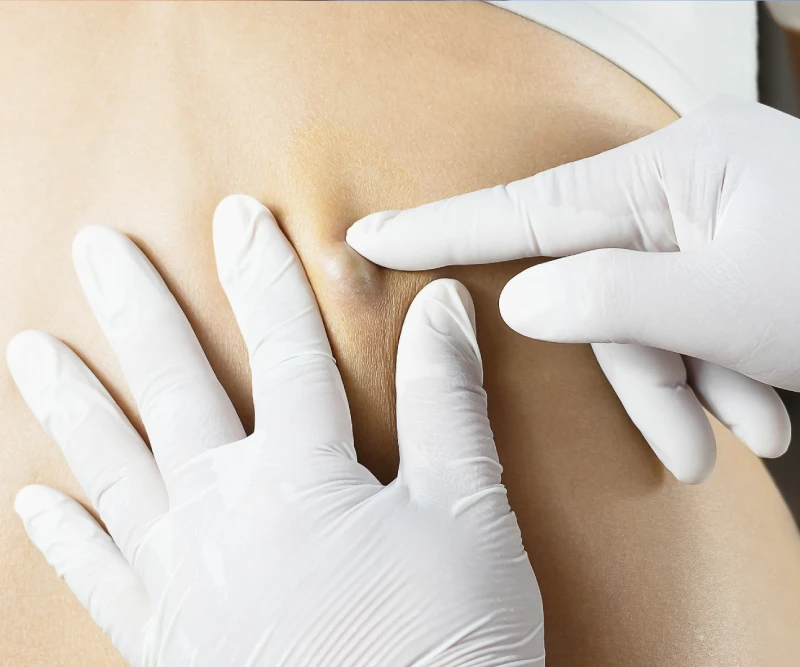milia, Cysts and dermatofibromas
are common skin growths that can be treated by dermatologists. Milia are small white, asymptomatic bumps that can develop on any are of the area of the skin. They represent small cysts of the skin. Milia are completely harmless but often don’t go away by themselves. People try to “pop” them but they have a wall around them and this often doesn’t work. The safest way to get rid of milia is to have them surgically extracted by a dermatologist.
Cysts (aka epidermoid cysts or sebcaceous cysts) are sacs filled with fluid or semisolid material that can occur anywhere on the body. Cysts appear as firm, round, flesh-colored nodules of various sizes, often with a central punctum (hole). Most cysts grow slowly and are asymptomatic but they can become inflamed and even infected. Cysts can occur at any age, but are more common in young adulthood, and appear to be more common in men. The most commonly affected areas are the head and neck and trunk.
Dermatofibromas are small, firm growths that usually appear on the legs. They develop after injury and mimic cysts but are firm and fibrous in nature and don’t have a whole or smelly material within them.
Patients come to our for a variety of reasons, including the cosmetic appearance of a lump on their body, the smelly cheese/curd-like material which can be extruded, or because of discomfort associated with inflammation or infection.
Cysts require treatment only if symptomatic or if a patient wants it removed for cosmetic purposes. A tender, inflamed, uninfected cyst can be treated with compresses, creams, antibiotics or an injection with intralesional triamcinolone acetonide (Kenalog®). For infected cysts, incision and drainage followed by antibiotics is suggested.
The most definitive treatment for epidermal cysts is surgical excision. Trust your cyst removal procedure to your skin experts – board certified Dermatologists.
while . We can effectively treat these conditions using various methods, such as excision or laser therapy. Excision involves surgically removing the cyst or dermatofibroma, while laser therapy uses light energy to target and remove the affected tissue. Your dermatologist will recommend the best treatment option based on the size, location, and type of growth, to ensure the best possible outcome.

